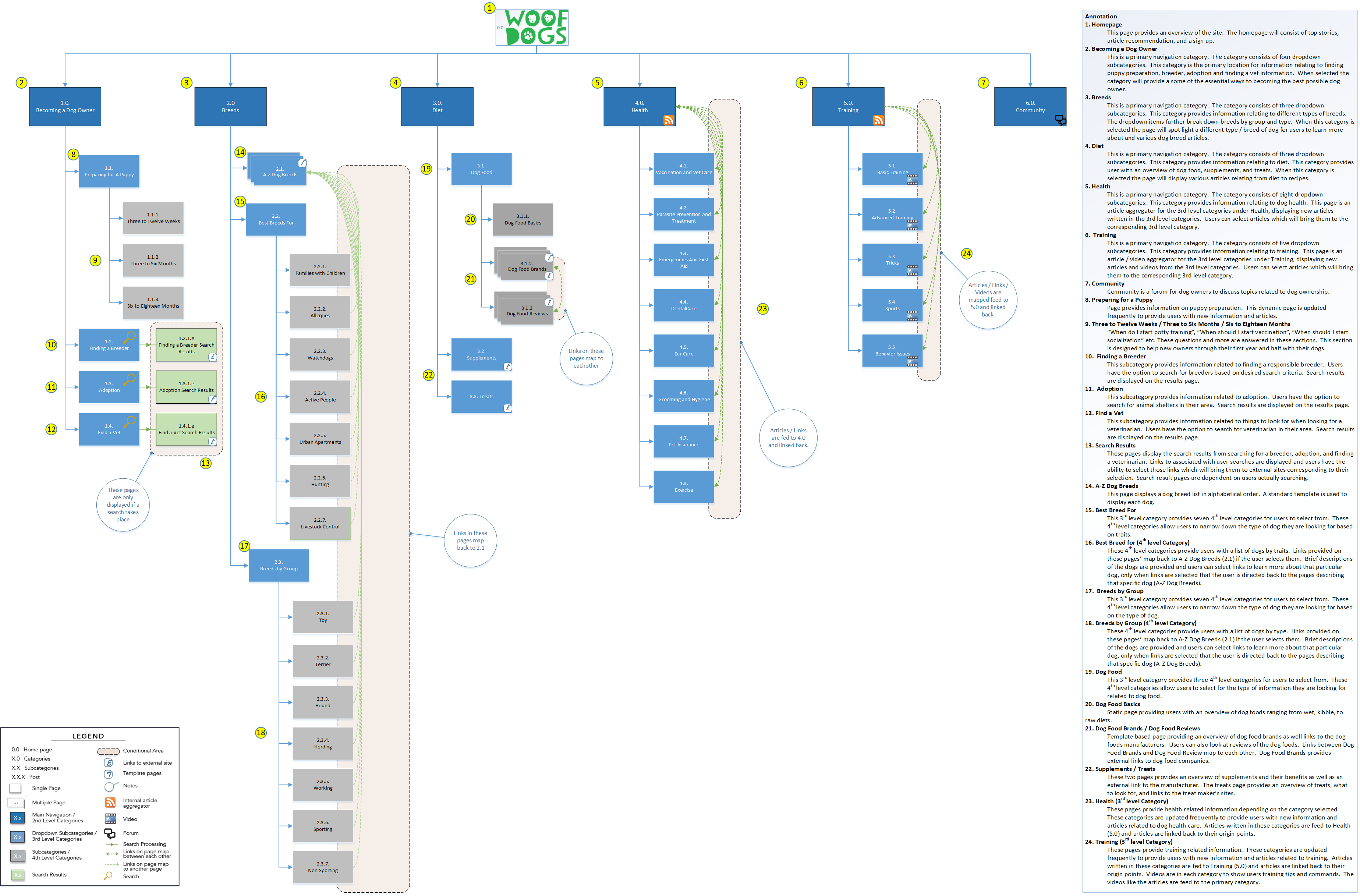About the project
The purpose of this project is to build the navigational structure for an informational site. Woof Dogs is an informational site that explores the various aspects of dog ownership. In order to build the navigational structure of the site several components are needed; content inventory, card sorting, information architecture testing, and a site map.My Role
For this project I developed the initial content items, tested the content items using card sorting, task testing, and developed the sitemap.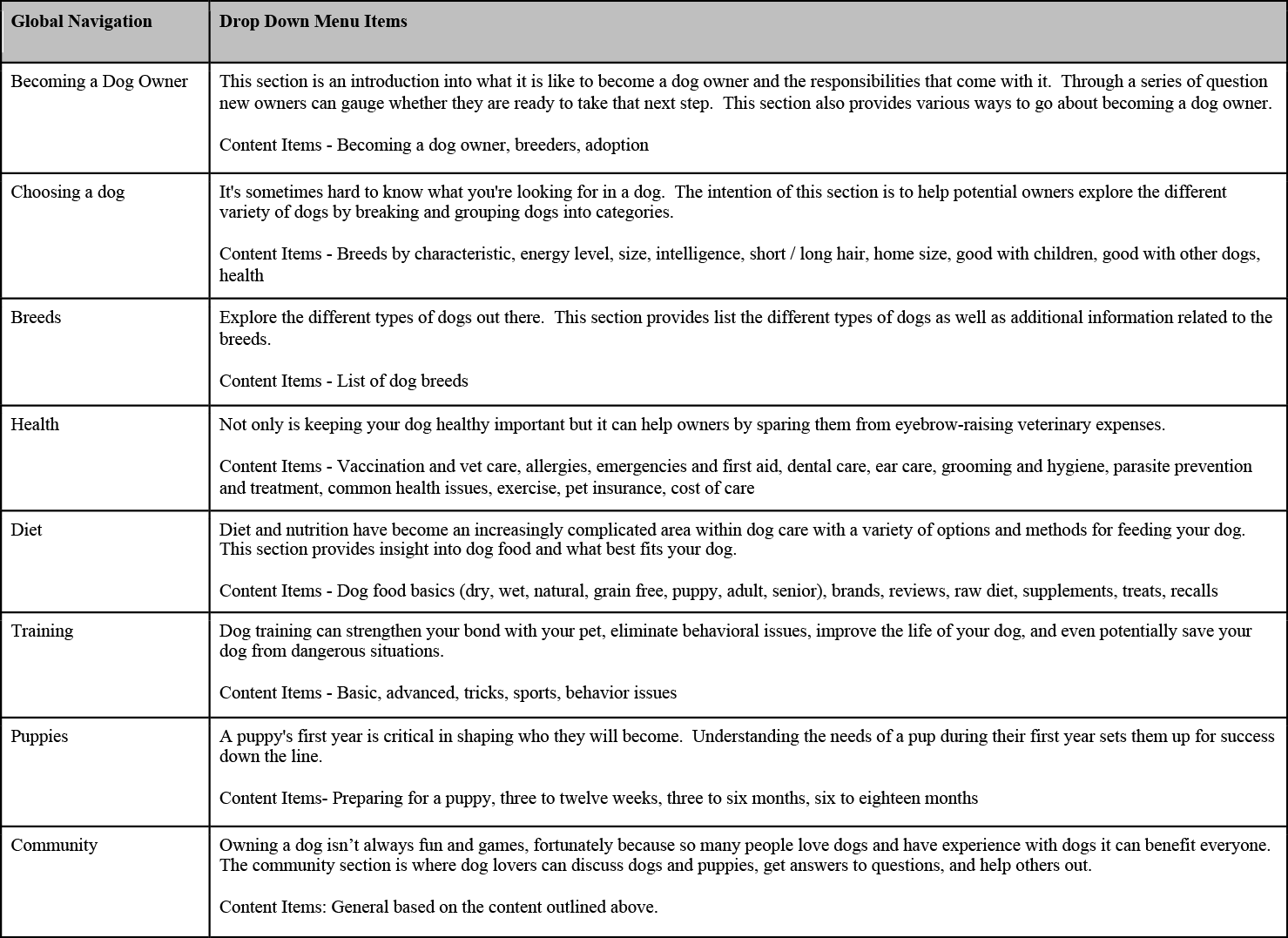
Content Inventory
Categories were created by writing down a general list of items that new owners might want to learn about when getting a new dog. From there redundant cards were removed and remaining cards were placed into groups based on similarity. Groups were than given a category name that best represented the cards. A content inventory was created with 1 level 1 category, 6 level 2 categories, 28 level 3 categories, 5 level 4 categories, and 3 level 5 categories. The content inventory would be used for the first round of testing, however only level 2 and level 3 categories were to be tested.
Personas
Personas were created to provide a reliable and realistic representations of key audience segments. The personas helped to focus decisions surrounding the site navigation.
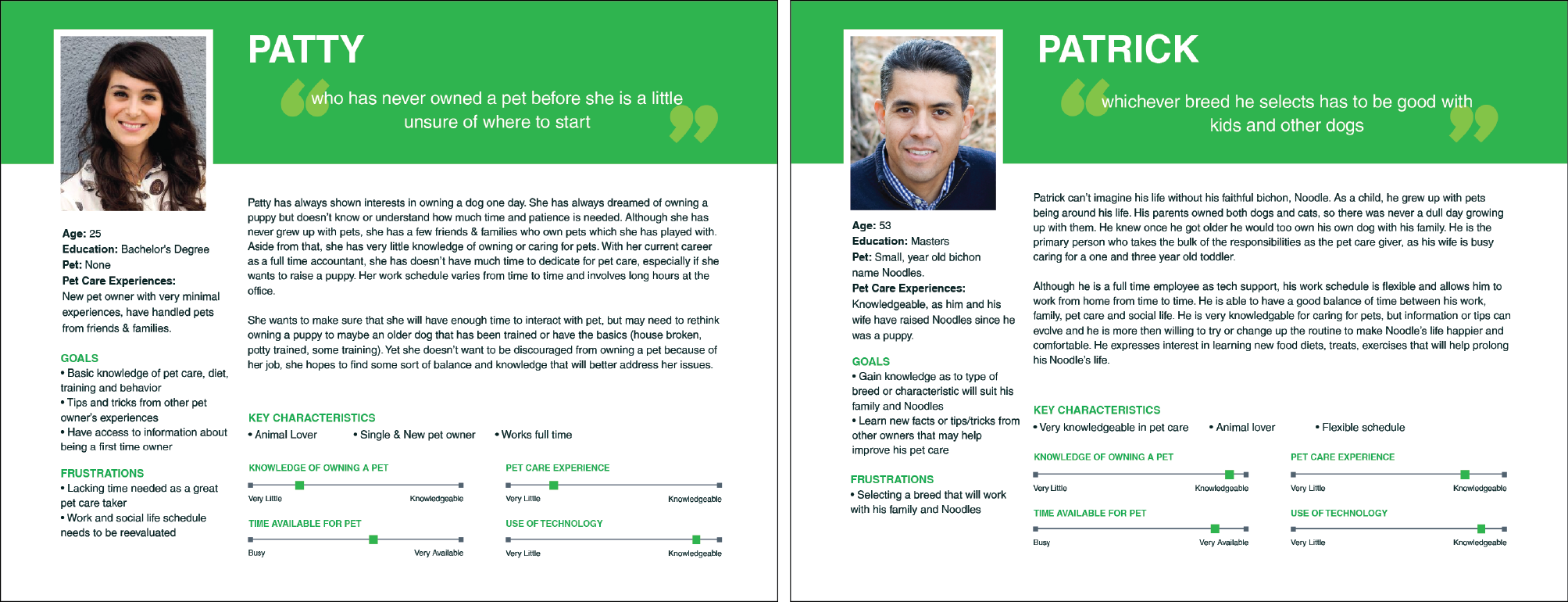
Card Sorting
Card Sort Round 1
The first round of card sorting focused on refining level 2 and level 3 categories. The card sort was sent to friends, family, and colleagues of which 8 participants completed the card sort with a median time of 4.90 minutes
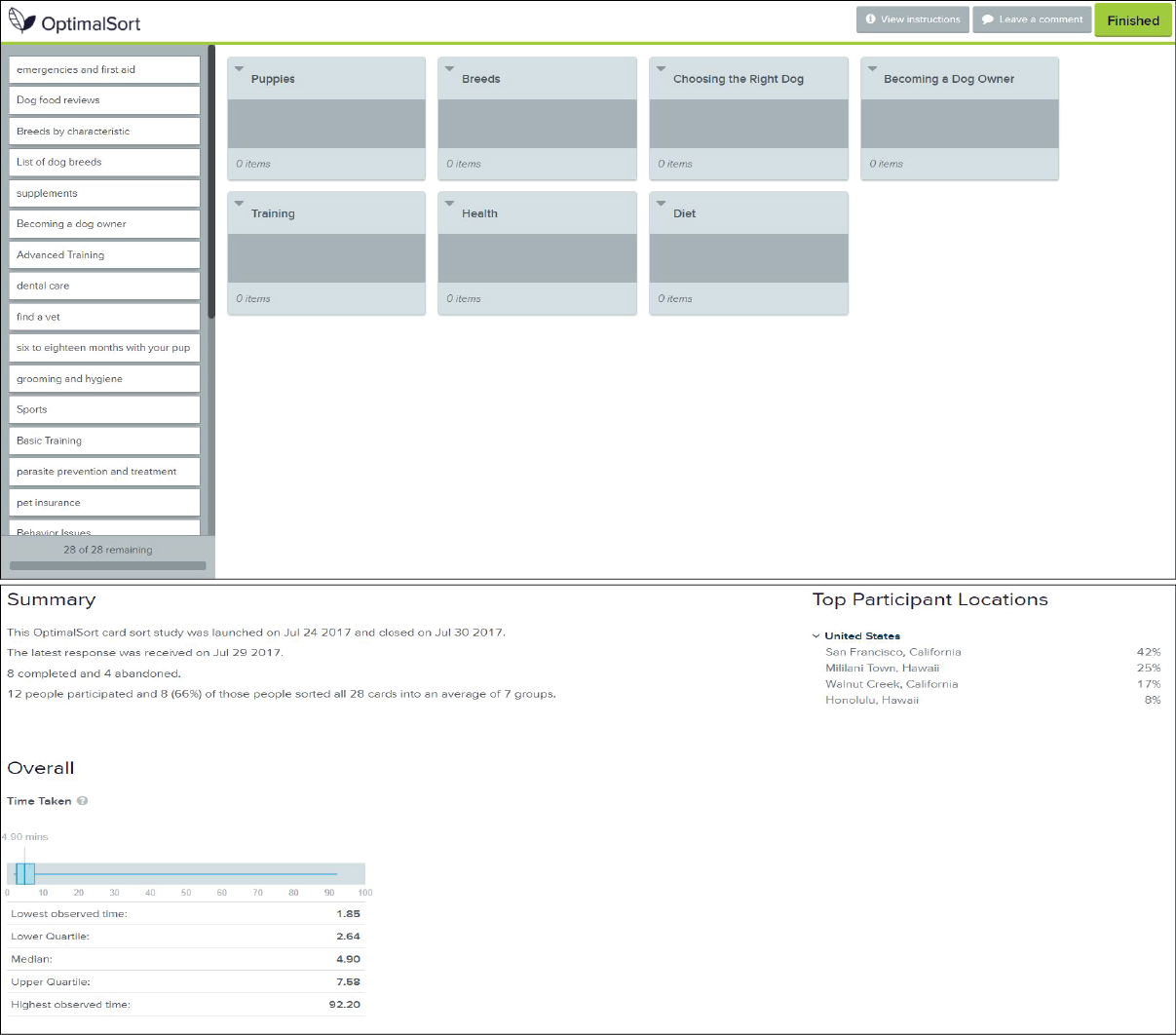
Based on the analysis the key findings from the first card sort were:
- There was a split in where participants were putting “Preparing for a Puppy” with half of the participants putting the card under “Puppies” and the other under “Becoming a Dog Owner”.
- “Choosing the Right Dog” category had no dominate cards making it the only category with no cards. While the data showed “Breeders” with the most participants putting it under “Choosing the Right Dog”, it was not clear enough that the results warranted the card to fall under “Choosing the Right Dog” category.
- There was no clear indication as to where “Breeders” card should fall under.
Several changes were made to the existing categories and a new content inventory was created consisting of 5 level 2 categories, 26 level 3 categories, and 17 level 4 categories.
Card Sort Round 2
Using a refined list of categories and cards, the second round of further refining level 2 and level 3 categories. The card sort was sent to friends, family, and colleagues of which 10 participants completed the card sort with a median time of 2.03 minutes
Results showed some key findings from the second card sort:
- Changing “Breeders” to “Finding a Breeder” helped to clarify what category the card should fall under. There was an increase from 37.50% during the first round to 70% in the second round with “Finding a Breeder”.
- Removing “Breeds by Characteristic” and “List of Dog Breeds” and replacing them with “A-Z Dog Breeds”, “Best Breeds For” and “Breeds by Group” helped more users in placing the cards in just one or two categories versus three or four.
- 100% of participants selected “Becoming a Dog Owner” category for “Preparing for a Puppy” card after removing the “Puppies category”, opposed to just 50% putting it in “Becoming a Dog Owner” category during the first card sort.
- 28% reduction in where participants placed the “Exercise” card. During the second card sort 60% of participants placed the “Exercise” card under the “Health” category opposed to 88% during the first card sort.
- 13% reduction in where participants placed the “Pet Insurance” card. During the second card sort 50% of participants placed “Pet Insurance” card under the “Health” category opposed to 63% during the first card sort.
Task Based Testing
Task were designed around the categories and cards that participants had troubles with during the second card sort. Additionally, I wanted to test one of the newer cards created after the first sort, specifically one that had a 4th level navigation. The testing consisted of using two categories (Breeds and Health) and three different cards (Best Breeds For, Exercise, and Pet Insurance).
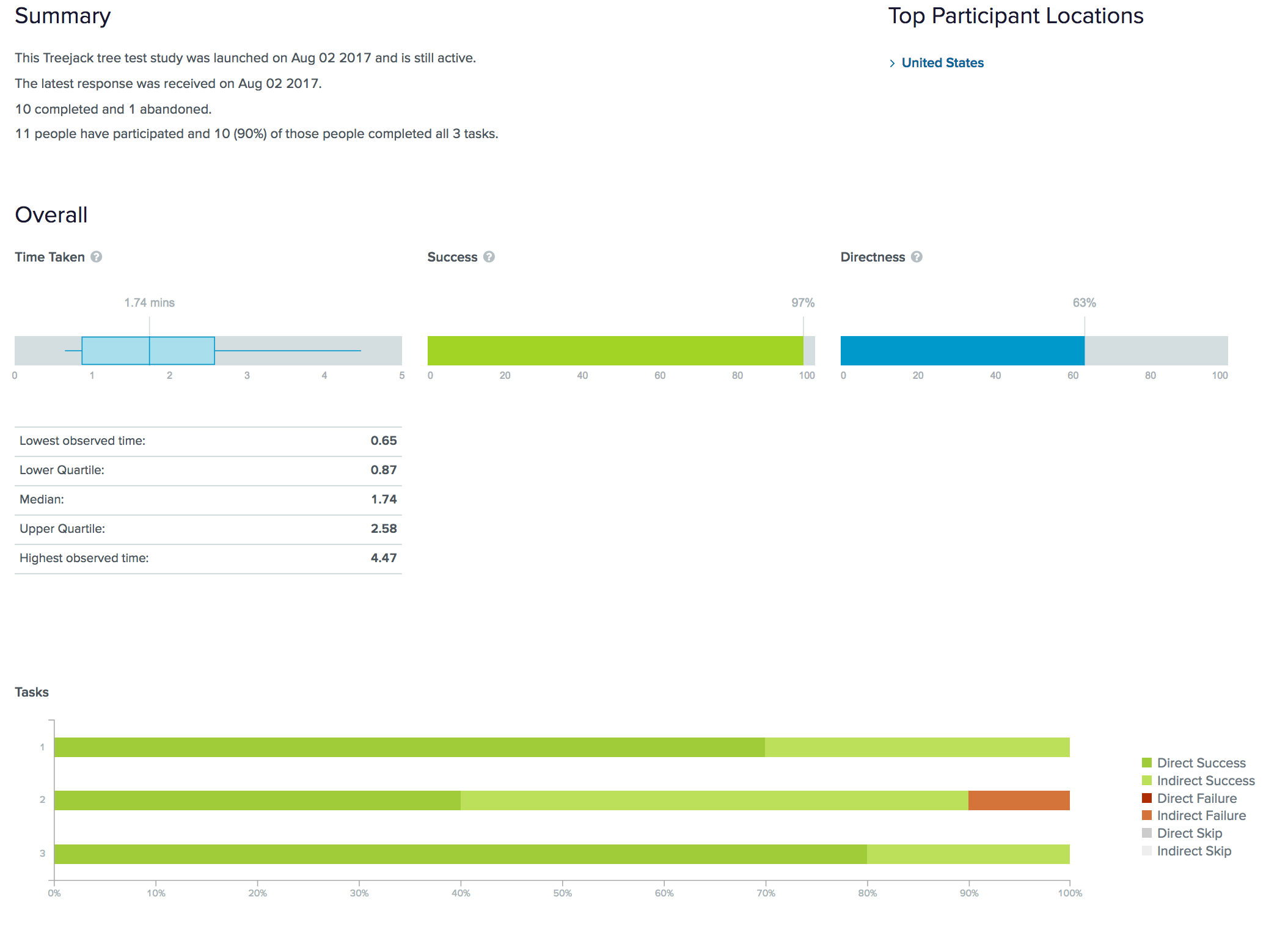
Task 1 - Finding information related to pet insurance
80% of participants visited the Health category first, and 100% of participants visited it during. 20% of participants visited the Kitchen category first. All participants were able to complete the task.
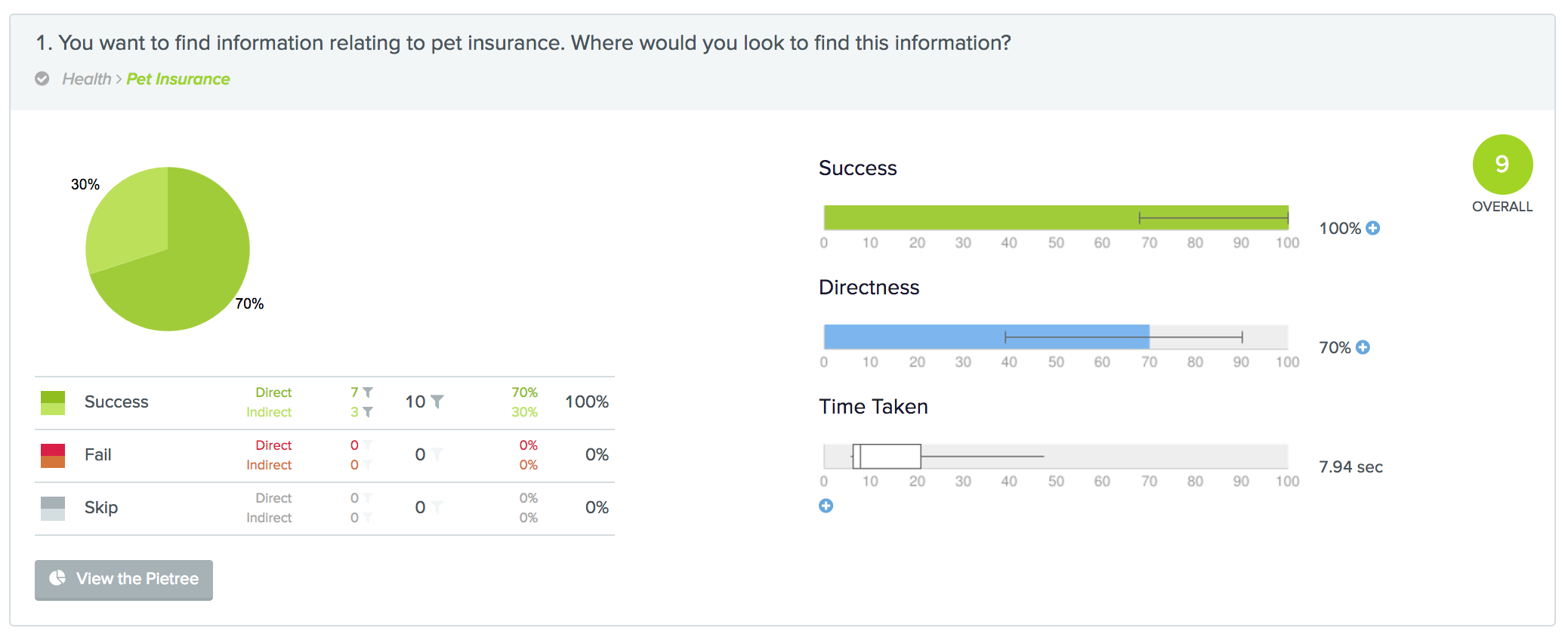
Task 2 - Finding information related to dog exercise
60% of participants visited the Health category first, and 100% of participants visited it during. 20% of participants visited the Training category first, 10% visited the Diet category, and 10% visited Breeds first. One participant failed the task.
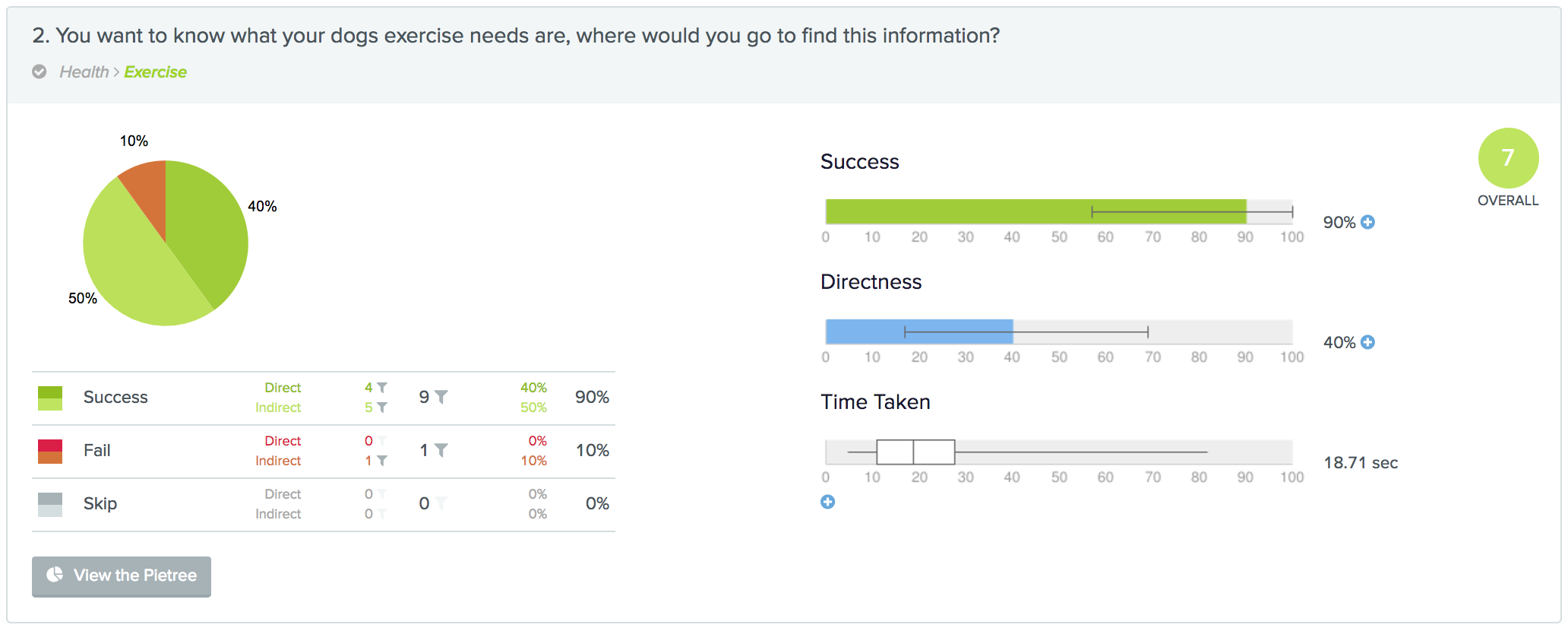
Task 3 - Find a dog that is good with families with children
80% of participants visited the Breed category first, and 100% of participants visited it during. 10% of participants visited the Community category first, and 10% of participants visited the Becoming a Dog Owner category first. All participants were able to complete the task.
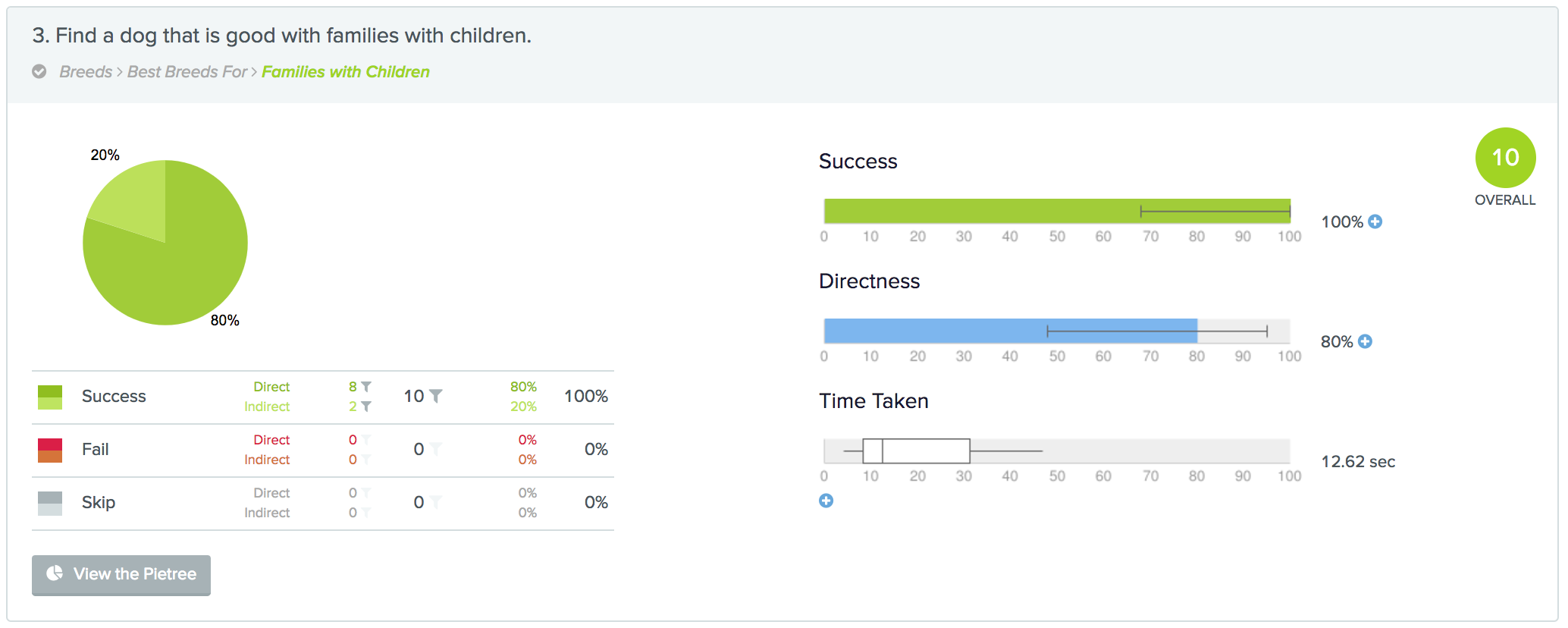
Sitemap Draft
An initial sitemap was created after the first round of card sorting. The initial sitemap consisted of 1 level 1 category, 6 level 2 categories, and 29 level 3 categories and was built using Microsoft Visio.
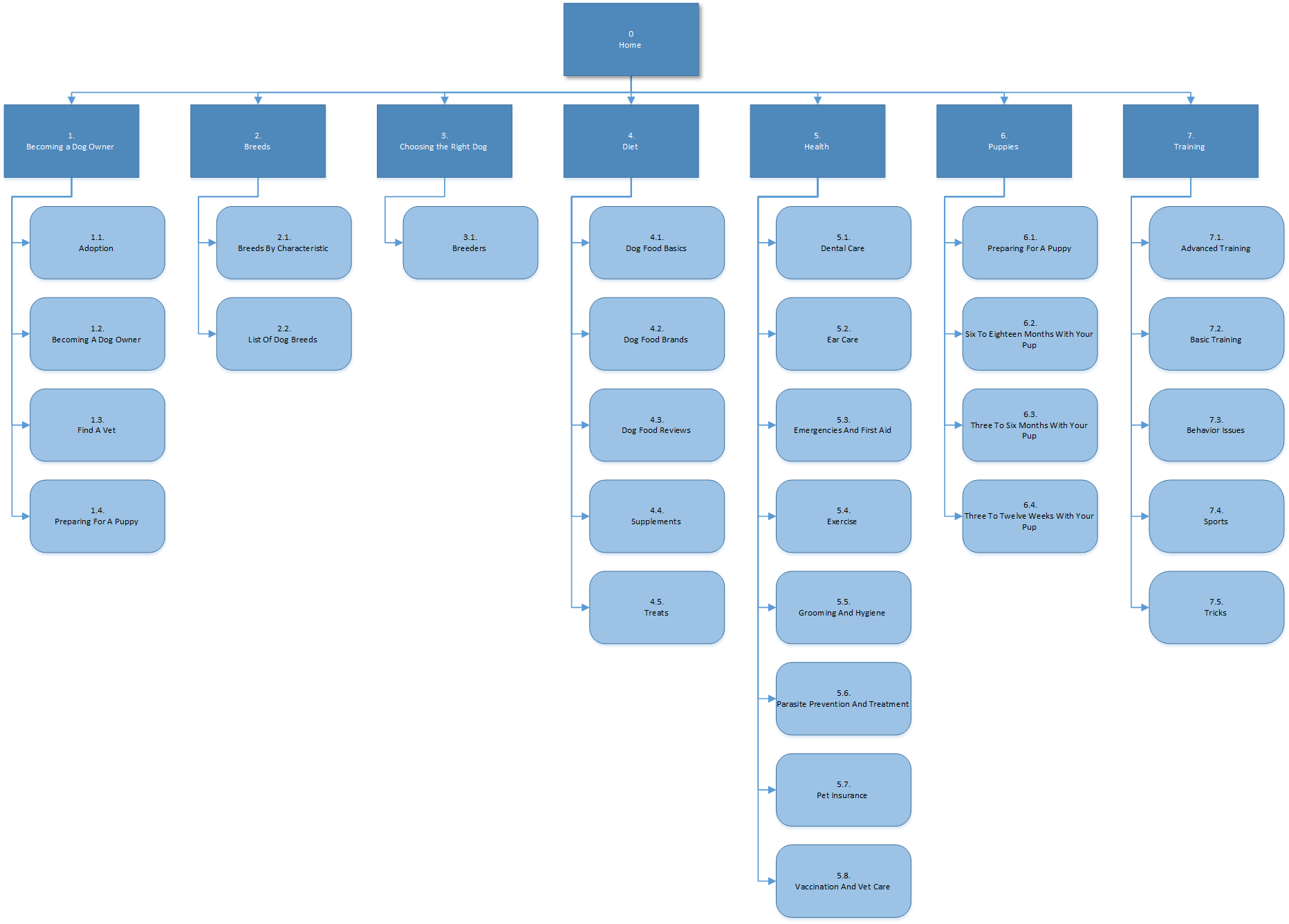
Brought to Life
Through continuous refinement the final sitemap consisted of 1 level 1 category, 6 level 2 categories, 23 level 3 categories, and 20 level 4 categories. The final sitemap was created using Microsoft Visio.
